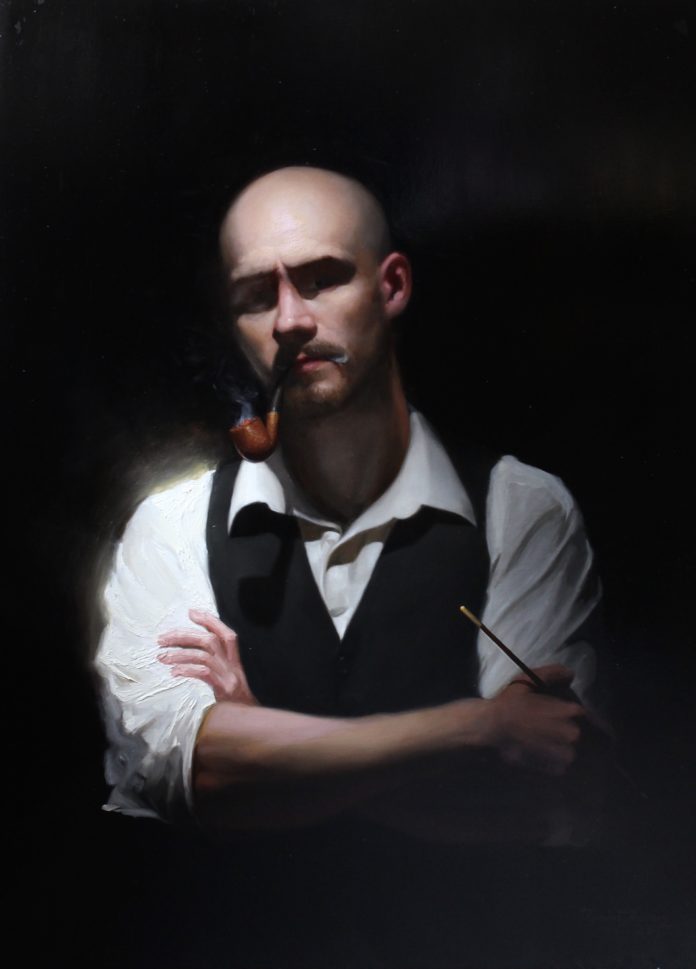On traditional painting > Driven by a love for painting in a traditional style, Eric Johnson (ericjohnsonfineart.com) shares his inspiration and his insights, including why he began creating his own paint pigments.
Johnson has been on the faculty for the Figurative Art Convention and Expo. (Join us for the next amazing event > Realism Live: A Global Virtual Art Conference.)
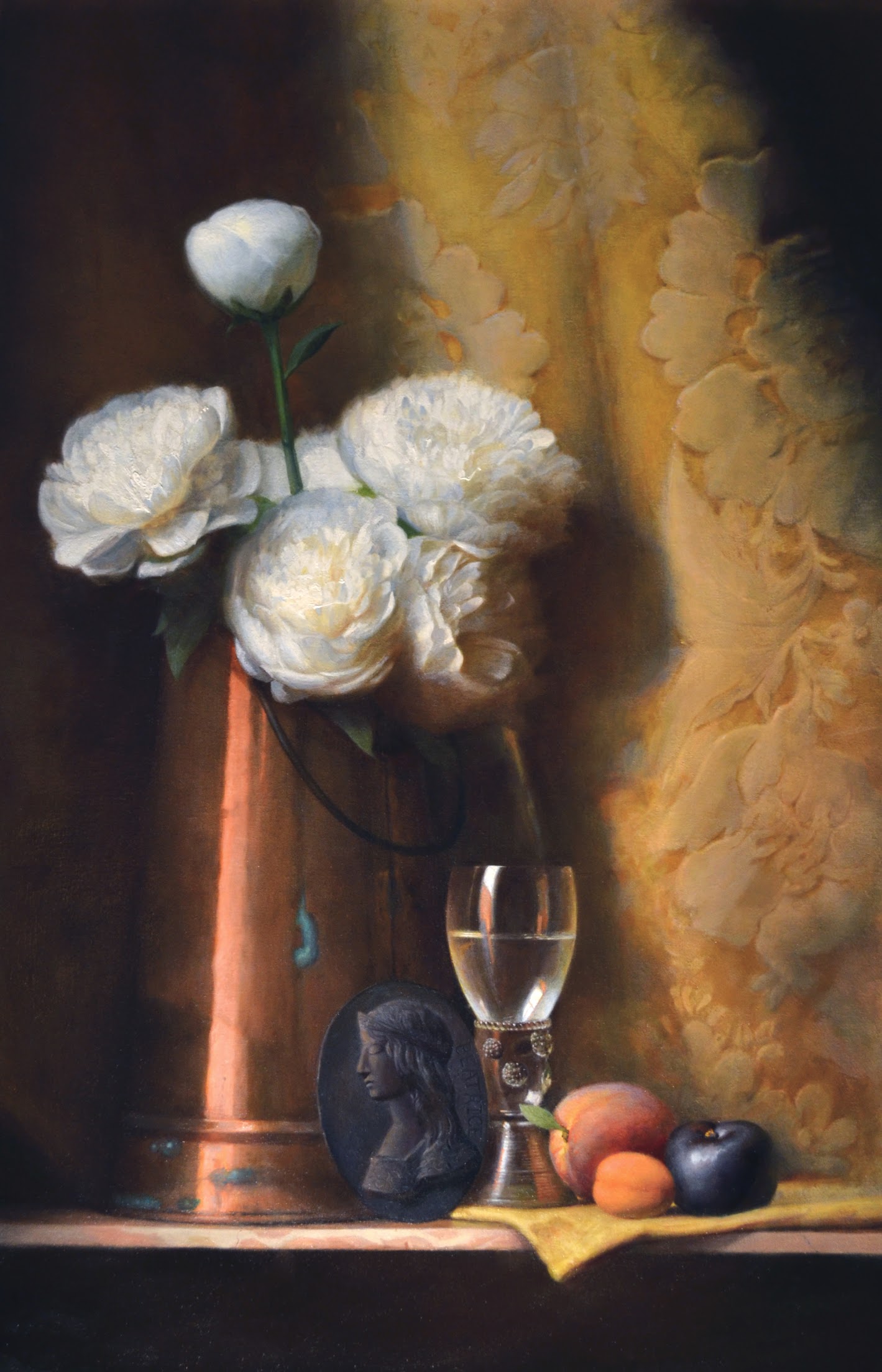
CherieDawn Haas: Please tell us about a recent work of yours.
Eric Johnson: In a cold brick studio with southeast natural light I painted this still life “The Story of We” (above) as a tribute to the beloved change that fatherhood has bestowed unto me.
I have been profoundly influenced by the 17th century’s Dutch masters, as in Dutch Golden Age still life paintings there is an enormous amount of symbolic meaning and thought into every element. And I thought I would bring that to life in a Boston School way by choosing a painting philosophy and color palette appropriate for an early 20th century American painter that received academic French training.
The yellow fabric in the background actually belonged to the eminent Boston School painter William McGregor Paxton, which he used in a variety of portrait commissions. There is a repeating triangular pattern between the flowers, representing the heavens and future reaching upwards. The pattern reappears again with objects on the marble base, which represents our time on earth. As a family we are three, like the fruit, and our glass is more than half full. The plaque has the name Beatrice etched into it for my daughter. Collectively I hoped to embody my feelings and tell a story of this moment in my life in a painting using the tools of my craft.
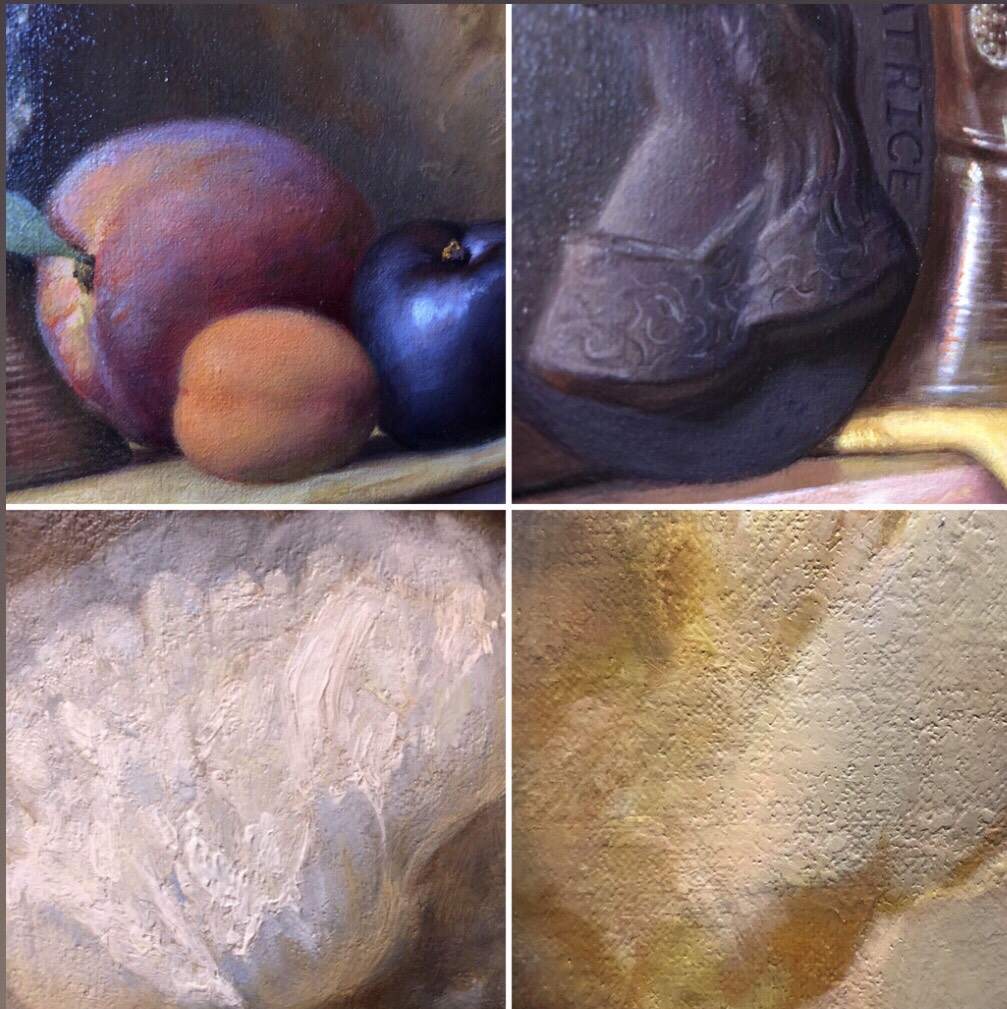
CDH: How did you start the process of creating your own paint pigments? What was the biggest challenge in the beginning?
EJ: Ever since I was young, the Dutch masters appealed to me most. The glow of the creamy lead tin yellow in Vermeer’s and Rembrandt’s paintings captivated me. I decided to educate myself in the science of painting. I wanted to be in control of every stage of painting, from pigment to the final details. Lead tin yellow was actually the first pigment that I ever made, which isn’t the easiest color to make considering that it has to be heated to an excess of 1000 degrees Fahrenheit for about six hours. The most difficult thing in the beginning was acquiring the information, skills, and materials to make a pigment that is lasting to be in my painting to stand the test of time. I read many of the old treatises left to us by the masters, although modern chemistry was there to fill in the gaps of knowledge which wasn’t understood at the time.
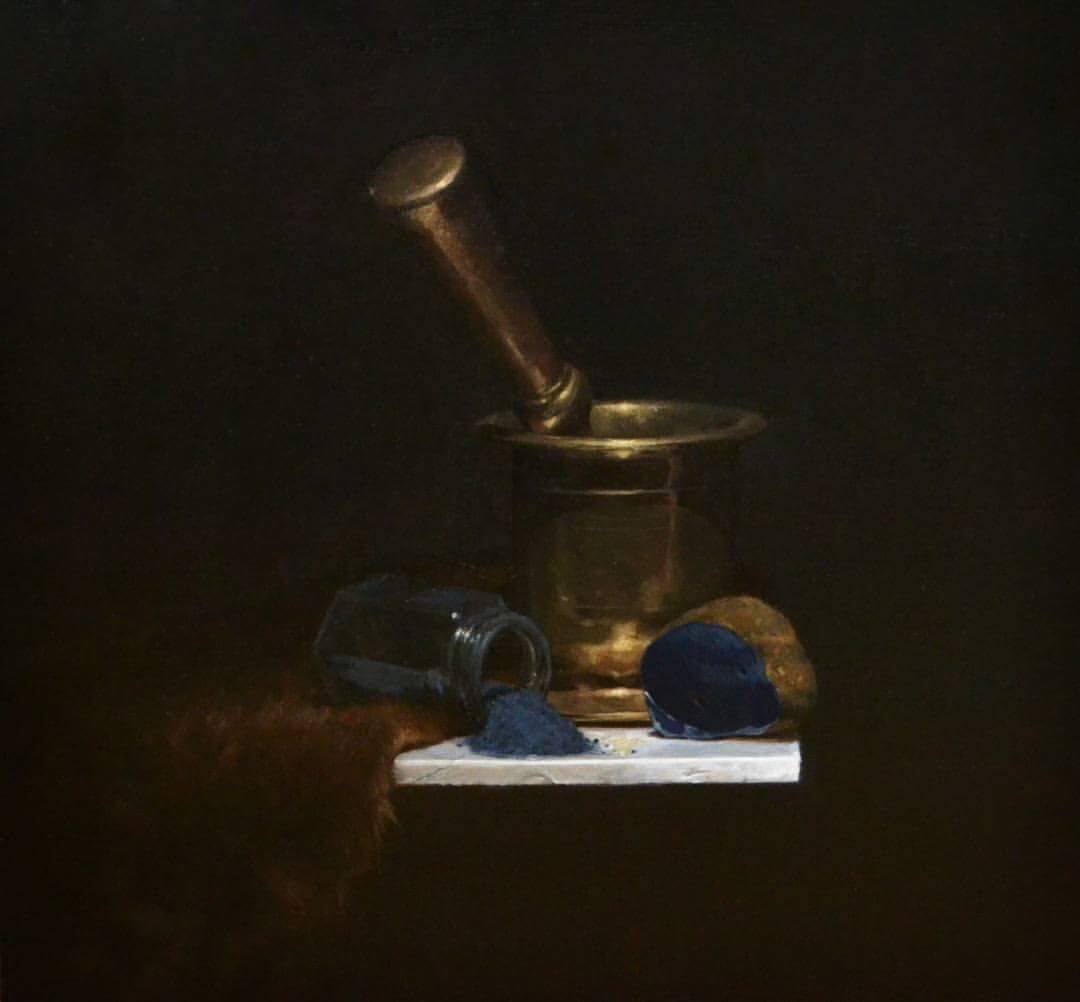
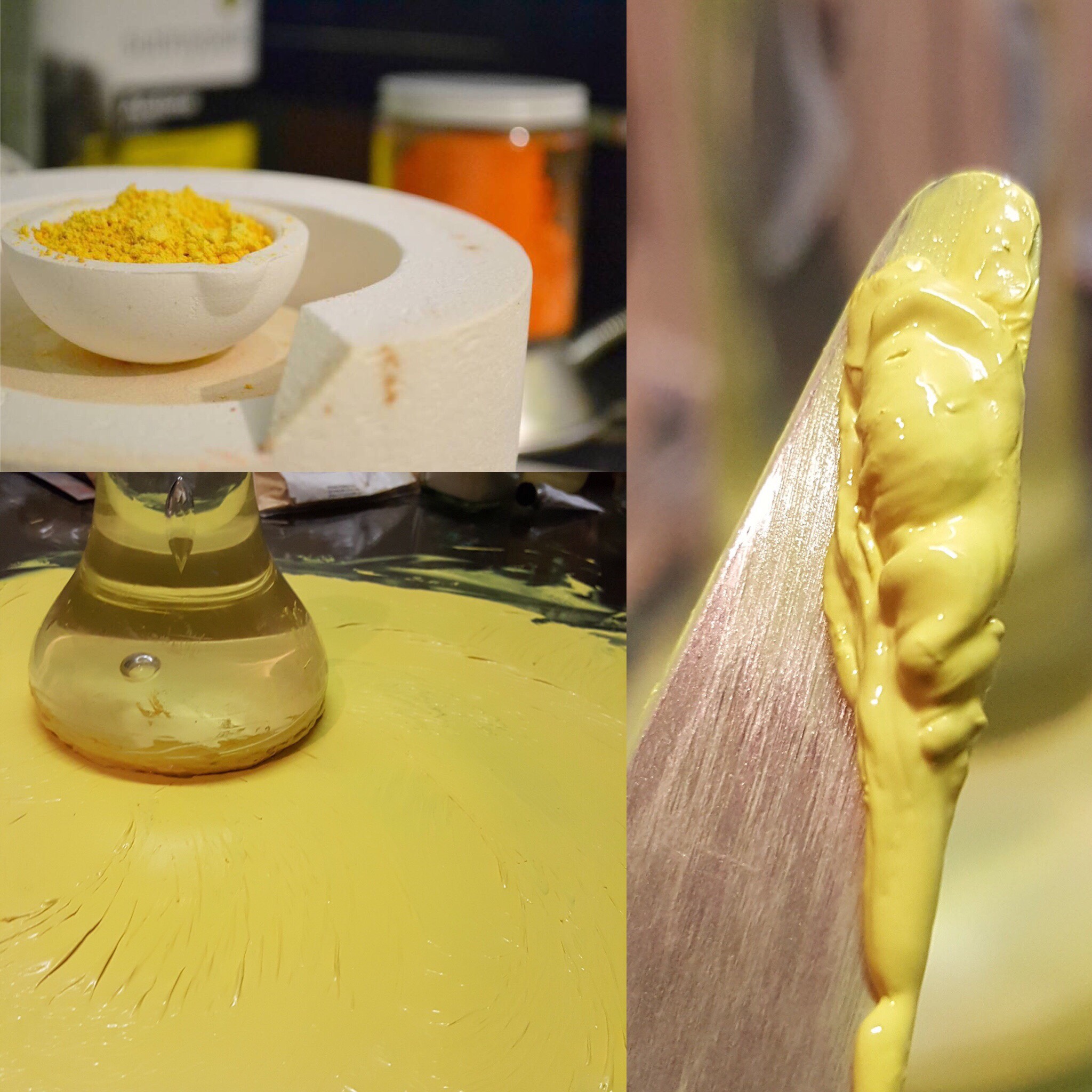
CDH: What other specific supplies do you typically put to use when painting?
EJ: In regards to materials, I will always paint on a good oil-primed linen or panel, and I usually paint with a limited palette made up of the least amount of colors that I will need. My palette is usually lead white, lead tin yellow, yellow ochre, genuine vermilion, alizarin, raw umber, burnt umber, cobalt, and ivory black. The high majority of my work is done with natural haired round brushes. They seem to be the most versatile brush. Since I usually make my paint, I don’t use extra mediums. I make the paint just right for the stage of painting that I am in. Painting became really simple that way! All I have to think about is the execution.
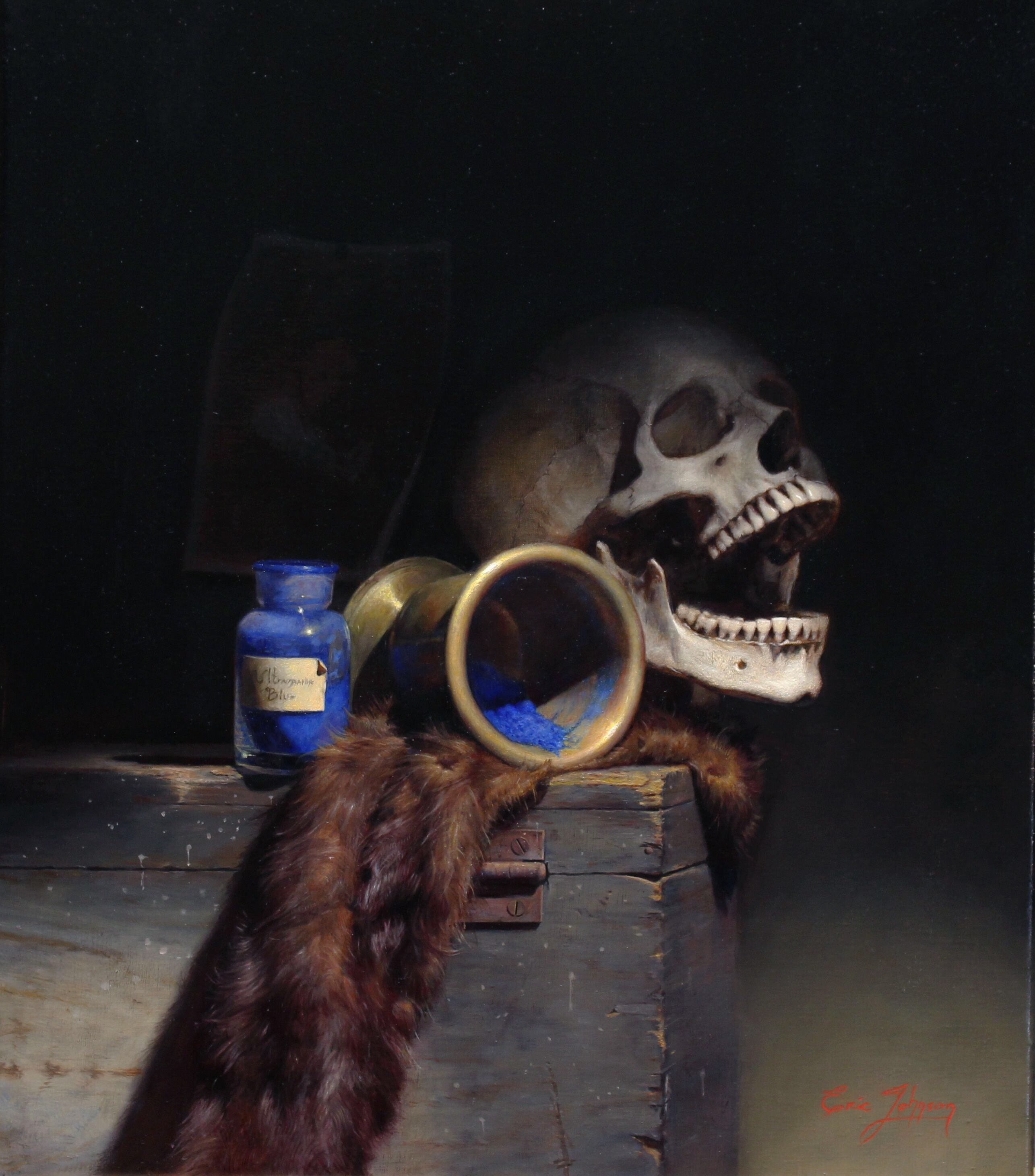
CDH: Why is “traditional painting” important to you?
EJ: Traditional painting is important to me because I have a deep and genuine care for craft of fine painting and sharing the knowledge that I have. I believe that if people, both the general public and artists, were educated to know information about realism and fine art, they could judge it and navigate through the nonsense, just like you would with music. You wouldn’t accept a badly out of tune piano being whaled on by a brute as music. Fine art in a realistic manner has standards the same way classical music does. Together the artist and public could grow: the art lover will find deeper meaning in the lovely painting before them, and the artist will find a liberating freedom towards artistic literacy.
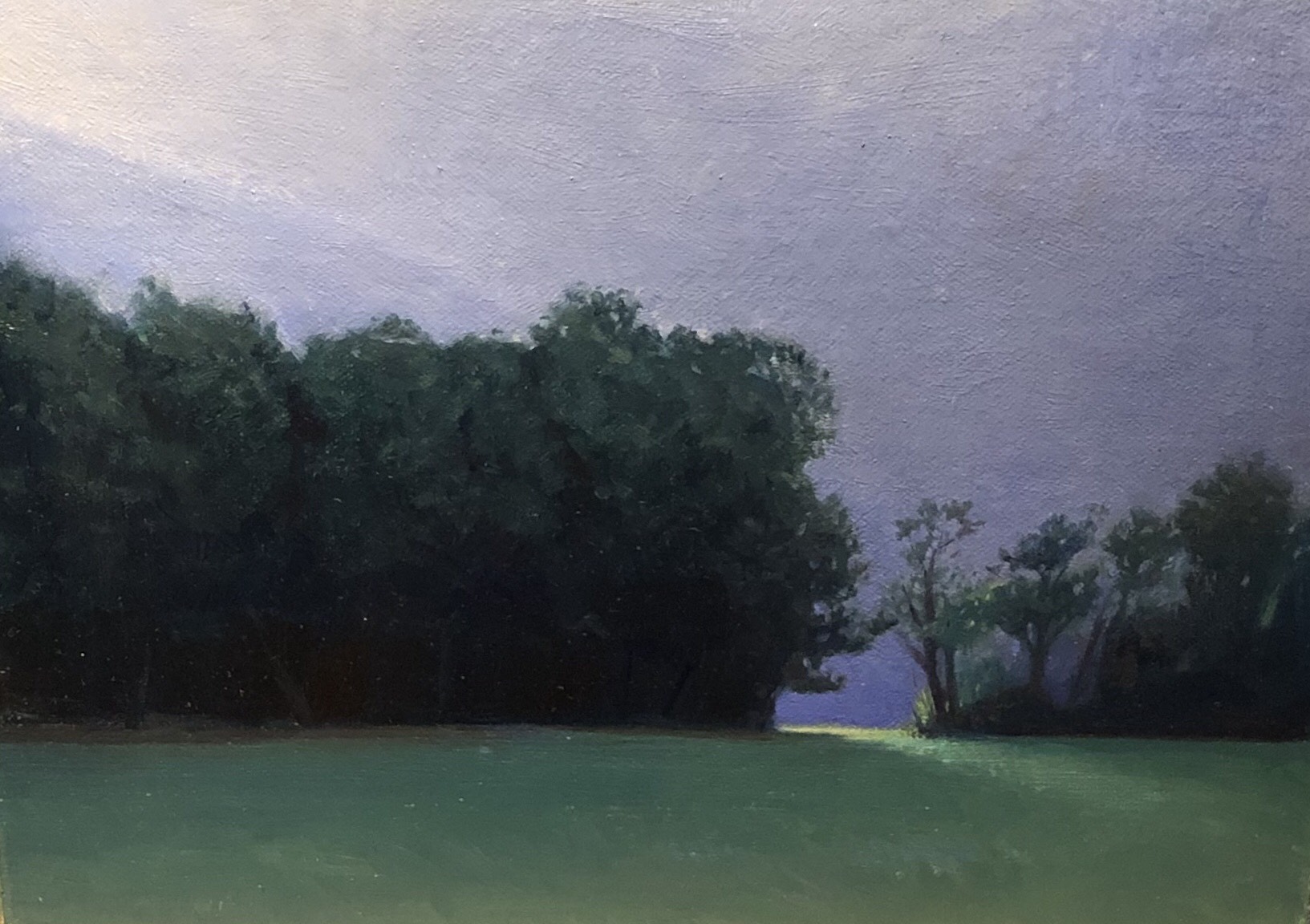
CDH: You paint portraits, still lifes, and landscapes. In what ways are the subjects similar for you? What draws you to each?
EJ: I paint portraits, landscape, and still lifes because I am inspired most by experiencing life. I’m not a huge fan of working from photography, technical reasons aside. I like the experience of waking up at 5 a.m. to watch the sun rise and paint it, to have a conversation with the model about philosophy while I paint him, to organize the objects that I’ve collected in an interesting symbolic manner. I believe that I should be able to do them all equally well. That proficiency for me comes with a rich quality of experience and being present while I do what I am most passionate about, painting.
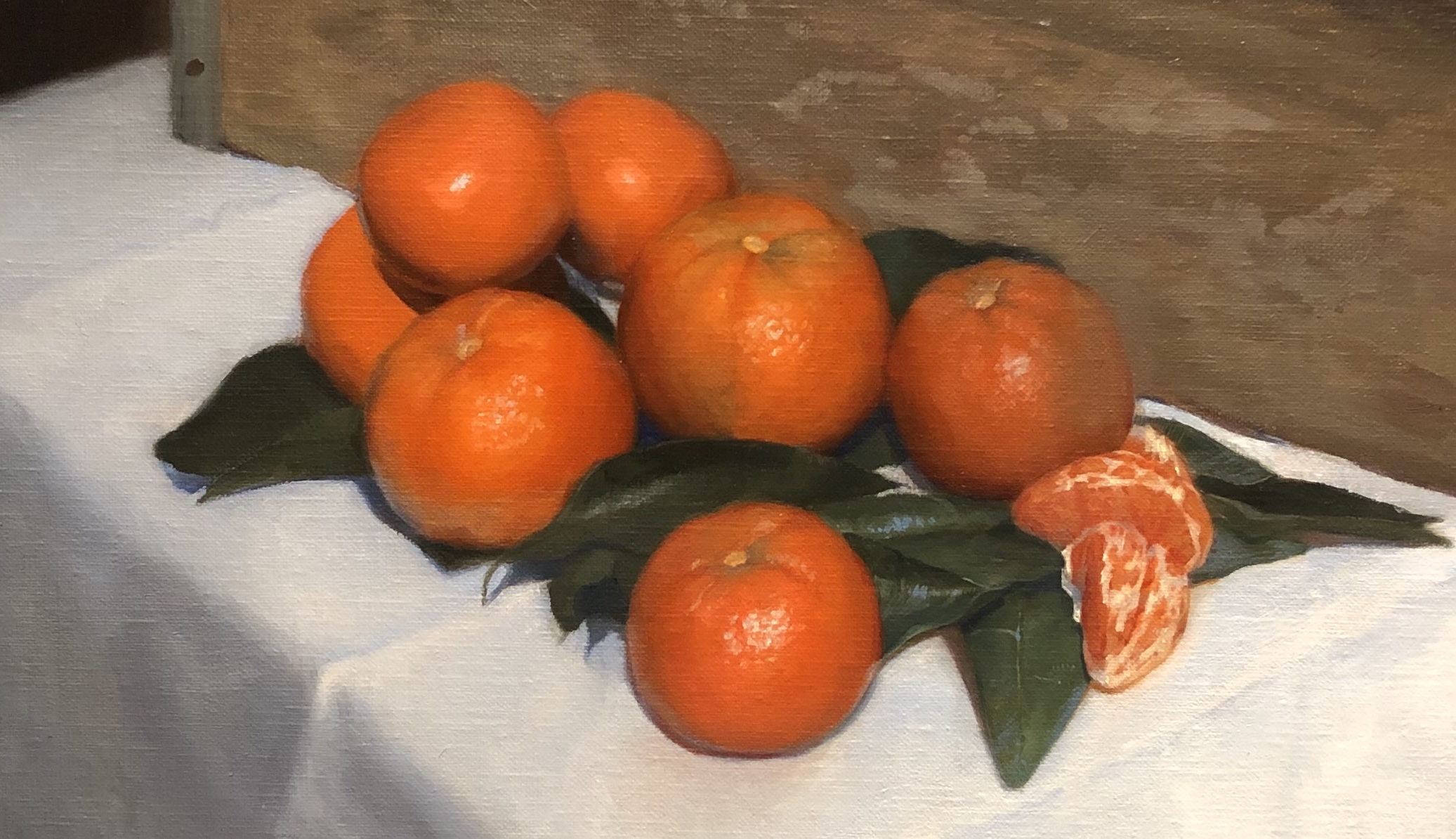
CDH: What do you plan to share this year at the Figurative Art Convention?
EJ: This year at FACE I would like to share everything that I know about the lineage and working methods of the old masters and how throughout the centuries painters have passed down information and traditions in whose evolution we are still partaking today.
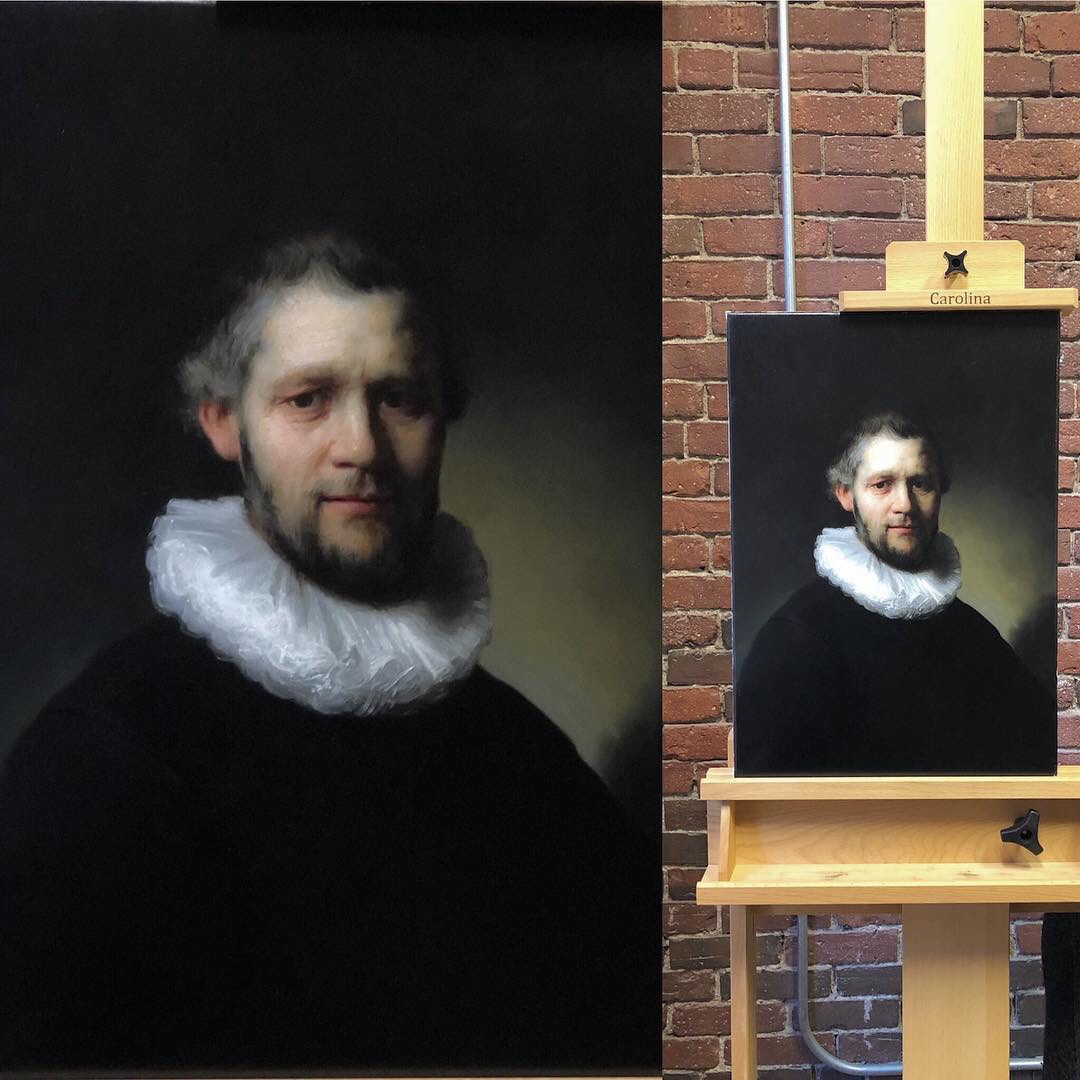
Related > Check out this 7-hour art video workshop by Eric Johnson, titled Rembrandt Secrets Revealed:


